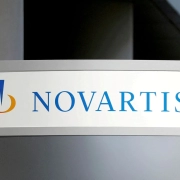The subtle knife
The subtle knife
Bias in healthcare, and what we can do about it.
By Jamil Rivers
Only three things in life are certain: death, taxes, and bias.
There’s no avoiding the first one. The second, well, maybe if you have a good accountant and property in the Caymans. But the third? That, we can do something about.
My name is Jamil Rivers. I am many things, but for the purposes of this conversation, two of them are most significant. I am a breast cancer survivor and thriver. And I am a Black woman.
I was diagnosed with breast cancer at age 39. With a husband and three children depending on me as the primary breadwinner, I could not afford to be anything less than the best possible advocate for myself in that patient journey. So I connected with a number of breast cancer advocacy organizations and learned as much as I could about my disease and how to get the best care possible. I was the patient in the chemo suite who the other patients came to when they had questions.
One of the things I learned while arming myself for this fight was that Black women are dying from breast cancer at a 40 percent higher rate than their White counterparts. I heard all kinds of explanations for this – poverty, social determinants of health, access to care, lack of insurance, on and on. But as I tried to advise and support all those other patients who came to me with questions, I discovered that the Black women among them had access to care, good jobs and incomes, good insurance, and yet they were still not receiving quality standard of care or even understanding what quality standard of care was.
Why not?
Bias.
 Now, let’s talk about bias a bit. Bias is not a moral position. It’s usually not even a conscious choice. It’s a function of the way the human brain works. If our brains didn’t develop shortcuts, we’d be so overwhelmed with finding bases for all our decisions that we wouldn’t be able to get out of bed in the morning. If you’ve got a few hours to burn, try looking up “heuristics” and you’ll see what I mean.
Now, let’s talk about bias a bit. Bias is not a moral position. It’s usually not even a conscious choice. It’s a function of the way the human brain works. If our brains didn’t develop shortcuts, we’d be so overwhelmed with finding bases for all our decisions that we wouldn’t be able to get out of bed in the morning. If you’ve got a few hours to burn, try looking up “heuristics” and you’ll see what I mean.
Most of the time those mental shortcuts we build are harmless. But not always. Sometimes they come with a very high price.
For example? It is in fact true that Black women are diagnosed with breast cancer at a slightly lower rate than the general population. Based on that, in the mind of some HCPs (healthcare professional), well, this is a Black female patient, she’s less likely to have breast cancer, and maybe I don’t have to be so aggressive about ordering testing as I might with someone else. But she has it, and I miss it, and she dies.
Or, Black women are more likely to have dense breasts. So an HCP sees something fuzzy in her mammogram and his or her brain takes a shortcut to, well, she just has dense breasts, so there’s no need for additional testing.
Or, Black women might not have the resources to pay for a high level of care. So an HCP sees something that might be suspicious, but his or her brain takes a shortcut to, well, she can’t afford all this, hopefully it’s nothing. This doesn’t happen consciously. But it happens nonetheless.
Even after being diagnosed, Black women with breast cancer often end up on the wrong end of bias. The full diagnostic workup might not be done. Genetic or genomic testing might not be proactively provided. Information about clinical trials might not be shared. HCPs and care providers make unconscious assumptions about financial or socioeconomic or insurance or transportation or poverty issues, and their brains just click to, “She doesn’t need that,” or, “She can’t use that,” when the typical White patient gets all of it as a matter of course.
Or pain management. HCPs and care providers might have unconscious assumptions about Black women and substance abuse, and so their brains click to, “We’d better not give her that.” And the patient suffers. Or not being offered resources for in-home nurse care after breast reconstruction, or being able to stay in the hospital for a sufficient number of days. It’s like death by a thousand cuts, the omission or incompletion of one after another of the many components of what quality standard of care should look like, and in fact does look like for the typical White patient.
All this, of course, is happening while the Black woman patient is already going through the quite sufficiently traumatizing, life-altering experience of dealing with a potentially deadly disease.
Isn’t that enough weight to bear?
So we need to attack bias in breast cancer care. My organization, The Chrysalis Initiative, is doing exactly that.
We’re doing it in two ways. The first is by educating providers. We’ve created an equity assessment for care facilities and a menu of what standard and equitable care ought to look like. We’re partnering with care centers to talk about bias with their employees. We’re analyzing real patient data so we can show providers the inconsistencies in their care. Our experience has been that most cancer centers and providers are surprised once they see the data showing how much bias can inform and impact diagnosis and treatment decisions for patients, how it can lead to substandard care, even unconsciously. It’s not an easy conversation to have with a facility director, to tell him or her that maybe their facility isn’t doing quite as good a job as they thought, and then show them the data to back it up. But the reality is that most people in healthcare have the best intentions. They aren’t consciously choosing to undertreat or mistreat Black women. They are shocked when they find out it might be happening. And they are, for the most part, eager to learn how to correct it.
The other way is by empowering the patients themselves. Too many patients, and not only Black women, take whatever care is given to them without a word of question or complaint. In fact, this tendency itself is a bit of bias in reverse. One of the most common mental shortcuts we all take is authority bias, the tendency to believe whatever an “expert” tells us. Should we, in general, believe our HCPs? Of course. They went to medical school and we most likely didn’t. They are up on the clinical data and we most likely aren’t. But that doesn’t mean we should accept whatever they say without question, or without an awareness of what the standard of care ought to be. So we at Chrysalis are connecting patients with personal coaches to help manage the worries and challenges specific to their situations as well as assessing if they are receiving quality standard of care. In partnership with Intouch Group and KTC ATL, we’ve launched a new BC Navi (short for Breast Cancer Navigation) website and patient portal. We’ve also created an app – BC Navi – that offers a variety of educational resources about breast cancer, connections with other patients, a checklist of what to expect and what to demand, a personalized dashboard to keep track of the many components of the patient journey, and information about and access to clinical trials. Even more importantly, BC Navi offers patients an opportunity to review and rate their providers with a focus on potential biases or a lack thereof – a sort of Yelp for helping patients find caregivers that will treat them as they deserve to be treated and holding caregivers accountable to a degree of cultural competence. In short, BC Navi equips Black women with breast cancer with the tools they need to recognize, share, and address gaps in healthcare and take control of their own patient care. We help patients break down artificial barriers in the path to their own survival. And of course all the patient data the app produces just helps us build a better case back to the first pathway to attacking bias, educating HCPs. Even after all I’d been through as a patient and an advocate, I was frankly shocked by how many prominent institutions were getting poor ratings from Black and Brown patients on BC Navi. Those ratings, we believe, can be the beginning of positive conversations and partnerships with those institutions.
To spread awareness of all of these efforts, Intouch Group developed a social media campaign, “Erase the Line,” highlighting outcome disparities and encouraging engagement and action. For every BC Navi registration, app download, or sign up, a pixel is erased from the inequality line depicted in the campaign’s digital graphics.
We as Black women with breast cancer are done relying, begging, or pleading for equal treatment. Equal treatment is our right, and we must demand it. A more than 40 percent difference in the death rate goes beyond coincidence or genetics or socioeconomic factors. It’s just unacceptable, full stop. The causes of substandard care may be unintentional or inadvertent or unconscious, but the outcomes are very much real. Bias may be as inevitable as death or taxes, but substandard care is not.
Jamil Rivers is founder of the Chrysalis Initiative.






 Reuters Health
Reuters Health

